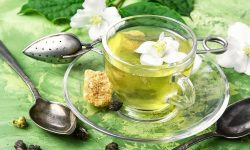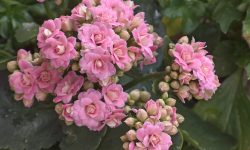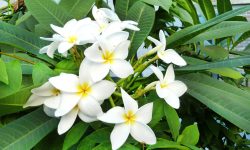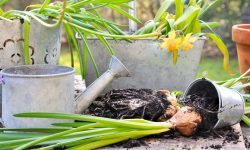Penstemons, known for their vibrant tubular flowers and striking foliage, are a favorite among gardeners seeking long-lasting color and pollinator-friendly blooms. Their versatility allows them to thrive in various garden styles, from wildflower meadows to formal borders. Understanding the best time to plant penstemons is crucial to ensuring healthy growth and a flourishing display of flowers throughout the season. Proper timing influences root development, bloom initiation, and the plant’s resilience against environmental stress.
Planting penstemons at the right moment sets the stage for vigorous growth, stronger stems, and prolonged flowering. By considering factors such as climate, soil conditions, and seasonal patterns, gardeners can maximize the plant’s potential. This guide provides essential tips and insights to help both beginners and experienced horticulturists enjoy a thriving penstemon garden year after year.
Understanding Penstemon Growth and Bloom Cycle
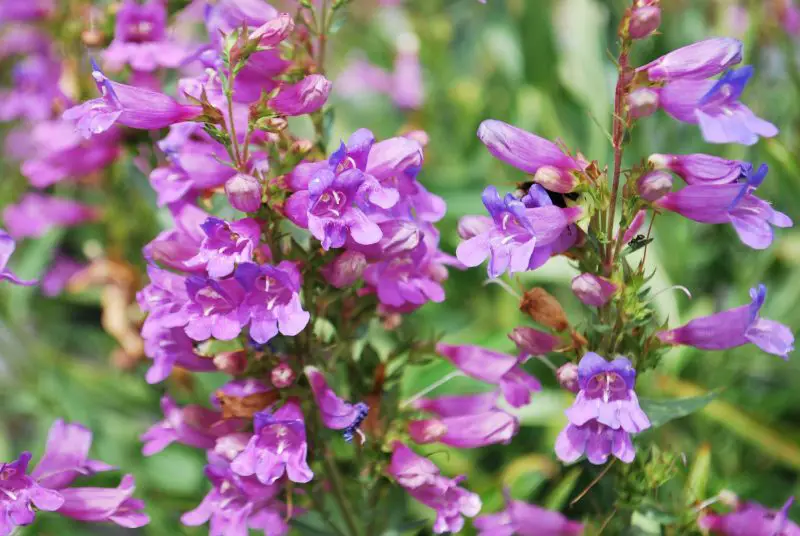
Penstemons, commonly known as beardtongues, have a unique growth pattern that begins with strong vegetative development in the early stages. After planting, these perennials focus energy on establishing a healthy root system, which is critical for nutrient absorption and water regulation. Proper soil preparation with well-draining conditions ensures that the roots develop deeply, supporting the plant’s future flowering. Early planting in spring or fall, depending on your climate zone, allows penstemons to establish themselves before experiencing extreme weather conditions. Well-established plants are more resilient, with stronger stems and larger, more vibrant blooms throughout their growing season.
The flowering cycle of penstemons varies by species and environmental conditions. Many varieties bloom from late spring to mid-summer, producing tubular flowers that attract hummingbirds and pollinators. Some species, such as Penstemon digitalis or Penstemon barbatus, can maintain their blooms into late summer if deadheaded regularly and cared for properly. Factors like sunlight exposure, soil fertility, and temperature fluctuations play a significant role in the timing and duration of flowering. Full sun encourages robust flowering, while partial shade may slow bloom development but help prolong the period in hotter climates.
Understanding the growth and bloom cycle allows gardeners to plan effective care routines. By aligning planting times with the natural cycles of each penstemon species, you can maximize bloom duration and maintain plant health. Observing early signs of budding and monitoring environmental conditions ensures timely interventions, such as staking tall varieties or adjusting watering schedules. This knowledge enables you to create a flourishing, vibrant penstemon garden with continuous blooms, attracting pollinators and enhancing the landscape for the entire growing season.
Choosing the Right Penstemon Varieties for Your Garden
Selecting the right penstemon varieties is crucial to ensure long-lasting blooms and plants that thrive in your climate. Penstemons vary widely in height, flower color, and bloom time, so consider your garden’s layout and desired aesthetic before choosing. Taller varieties, such as Penstemon barbatus, can create vertical interest and are ideal for the back of borders, while shorter varieties like Penstemon digitalis are perfect for foreground plantings or container gardens. Understanding the growth habit of each variety helps prevent overcrowding and ensures every plant receives adequate sunlight and air circulation.
Flower color and bloom duration are other key considerations. Penstemons offer shades ranging from vivid reds and pinks to purples, blues, and whites. Some cultivars are bred specifically for extended flowering, while others provide concentrated bursts of color for a shorter period. If your goal is continuous garden color, choose a combination of early, mid, and late-blooming varieties. Mixing colors and heights also creates visual interest, attracting pollinators such as bees, hummingbirds, and butterflies to your garden.
Climate adaptability should guide your selection as well. Native penstemons are generally more drought-tolerant and resilient in local conditions, whereas non-native or hybrid varieties may require extra care or winter protection. For cooler climates, choose cold-hardy varieties that can survive frost, while in warmer regions, select heat-tolerant cultivars that can withstand high temperatures. By thoughtfully selecting penstemon varieties suited to your garden’s conditions, you increase the likelihood of healthy plants, abundant flowers, and a colorful landscape that lasts throughout the season.
Best Time to Plant Penstemons Based on Climate
The timing for planting penstemons depends heavily on your local climate. In cooler regions with harsh winters, it’s best to plant in spring after the last frost. This ensures that the young plants have time to establish roots and acclimate to outdoor conditions before facing freezing temperatures. Early spring planting also allows penstemons to take advantage of the full growing season, providing ample time for vegetative growth and bloom development. In these areas, choosing cold-hardy species like Penstemon digitalis or Penstemon hirsutus can help ensure survival and a long-lasting flowering period.
In warmer climates with mild winters, fall planting is often preferable. Planting in autumn allows penstemons to establish strong roots while the soil remains warm, resulting in earlier blooms in spring. The cooler temperatures of fall reduce transplant shock and help the plant conserve energy for flowering. Additionally, autumn-planted penstemons are more resilient to summer heat, as their established root systems can better support water uptake and nutrient absorption during peak flowering months. Selecting heat-tolerant varieties like Penstemon barbatus or Penstemon x mexicali ensures they thrive in warmer regions.
Regardless of climate, it’s crucial to consider microclimates and local soil conditions when planning your planting schedule. Well-draining soil, adequate sunlight, and protection from extreme weather will influence the success of your penstemon garden. Adjusting your planting time to align with these factors ensures healthy growth, abundant blooms, and plants that can withstand seasonal changes. Proper timing maximizes both the aesthetic appeal and longevity of your penstemons, creating a vibrant, long-lasting garden display.
Preparing Soil and Location for Planting Penstemons
Proper soil preparation is essential for penstemons to thrive and produce vibrant blooms. These plants prefer well-draining soil, as waterlogged conditions can lead to root rot and poor growth. Before planting, loosen the soil to a depth of at least 12 inches and incorporate organic matter such as compost or aged manure. This improves soil structure, provides essential nutrients, and enhances moisture retention without causing water accumulation. Testing the soil pH can also help; penstemons grow best in slightly acidic to neutral soil with a pH between 6.0 and 7.0, promoting nutrient availability and healthy root development.
Choosing the right location is equally important. Penstemons require full sun to produce their characteristic vibrant flowers. A site that receives at least six to eight hours of direct sunlight daily ensures robust growth and prolonged blooming. Avoid shaded areas, as insufficient sunlight can result in leggy plants with fewer blooms. Additionally, consider wind exposure; strong winds can damage tall varieties and affect flower production. Selecting a spot with some natural wind protection or providing stakes for support will keep your penstemons healthy and upright.
Drainage and microclimate factors also influence long-term success. Raised beds or gently sloping areas help prevent standing water around the roots, especially after heavy rains. Mulching around newly planted penstemons can retain soil moisture, regulate temperature, and suppress weeds, but avoid placing mulch directly against the crown to prevent rot. By preparing the soil properly and selecting an optimal location, you set the foundation for vigorous growth, extended blooming, and a visually stunning penstemon garden season after season.
Planting Penstemons for Optimal Growth
Proper planting is essential for penstemons to thrive and produce long-lasting blooms. Start by selecting a location that offers full sun, as these plants flourish with at least six to eight hours of direct sunlight daily. Good air circulation around each plant is crucial to prevent fungal diseases and encourage healthy growth. Prepare the soil by ensuring it is well-draining, slightly sandy or loamy, and enriched with organic matter. Avoid heavy clay soils, which can retain water and lead to root rot. Adding compost or grit improves drainage and provides nutrients for young plants.
When transplanting penstemons from pots or starting from bare-root, dig a hole slightly larger than the root system. Gently spread the roots and position the plant so the crown sits at soil level. Backfill with prepared soil, pressing gently to eliminate air pockets, and water thoroughly to settle the roots. Spacing is important; provide adequate distance between plants based on the variety’s mature size to prevent overcrowding, which can reduce flowering and increase susceptibility to pests.
Mulching around newly planted penstemons helps conserve moisture, suppress weeds, and regulate soil temperature. Use a thin layer of organic mulch, keeping it away from the crown to prevent rot. Water consistently during establishment, typically two to three times per week depending on rainfall, until the plant develops a strong root system. Proper planting practices set the foundation for robust growth, ensuring that penstemons not only survive but also deliver vibrant, long-lasting blooms throughout the season.
Planting Tips for Penstemons
Choosing the Right Location
Selecting the perfect location is essential for healthy penstemon growth. These sun-loving perennials require at least six to eight hours of direct sunlight daily to develop strong stems and vibrant flowers. In regions with very hot summers, light afternoon shade can prevent heat stress and prolong the bloom period. Full sun exposure also promotes rich flower coloration, making the garden visually striking. Positioning penstemons in a well-drained area ensures roots do not sit in water, which can lead to rot or fungal infections.
Proper spacing is equally important. Crowding plants can limit airflow, reduce bloom quality, and increase disease risk. Space plants 12 to 18 inches apart to allow sunlight to penetrate all leaves and stems evenly. Adequate spacing also facilitates easier maintenance, including pruning, deadheading, and monitoring for pests. By carefully choosing the right location with optimal sunlight, soil drainage, and airflow, gardeners can ensure robust, long-lasting blooms that enhance garden aesthetics for the entire growing season.
Preparing the Soil
Healthy penstemons start with well-prepared soil. Begin by loosening the soil to a depth of at least 12 inches to encourage deep root penetration. Remove debris, rocks, and weeds to provide a clean planting area. Adding organic matter such as compost, aged manure, or leaf mold improves soil fertility, enhances aeration, and helps retain moisture, giving young plants the nutrients they need to establish quickly.
Penstemons prefer slightly acidic to neutral soil, ideally with a pH of 6.0 to 7.0. In heavy clay soils, incorporate sand or fine gravel to improve drainage, preventing root rot and other water-related issues. For sandy soils, extra compost can help retain moisture without creating soggy conditions. Proper soil preparation ensures strong root systems, supports consistent flowering, and minimizes plant stress. Taking the time to prepare the soil thoroughly increases long-term success, promoting healthy growth and vibrant, extended blooms throughout the season.
Planting Techniques for Success
Correct planting techniques are crucial for penstemons to thrive and flower abundantly. Dig a hole slightly larger than the root ball to allow roots to spread naturally. Remove the plant from its container carefully, loosening circling roots to encourage outward growth. Place the crown slightly above soil level to prevent water from pooling around the base, which could cause crown rot.
Backfill with amended soil and press gently to remove air pockets, then water thoroughly to help settle the plant. Apply a thin layer of mulch around the base to retain moisture and suppress weeds, but avoid covering the crown. Proper planting reduces transplant shock, encourages strong root development, and supports vigorous growth. Regular monitoring in the first few weeks ensures the plant establishes well, adapts to its new environment, and sets the foundation for lush, long-lasting flowers in the seasons to come.
Sunlight Requirements for Healthy Penstemon Growth
Sunlight is one of the most critical factors in ensuring penstemons grow vigorously and produce abundant flowers. These plants naturally thrive in full sun conditions, requiring at least six to eight hours of direct sunlight each day. Adequate sunlight encourages strong stem development, vibrant flower color, and prolonged blooming. Inadequate light can lead to leggy growth, fewer flowers, and increased susceptibility to diseases due to poor airflow around the plants.
When selecting a location for penstemons, choose spots that are free from shade cast by taller plants, trees, or structures. South-facing areas are ideal in most climates, providing consistent sunlight throughout the day. Morning sunlight is particularly beneficial as it helps dry dew from leaves, reducing the risk of fungal infections. In extremely hot regions, a brief period of afternoon shade can protect the plants from excessive heat, which might otherwise scorch foliage and shorten the blooming period.
For gardeners growing penstemons in containers, placement is equally important. Position pots in sunny locations such as balconies, patios, or windowsills where they can receive the required light. Rotate containers periodically to ensure even growth and prevent plants from leaning toward a light source. Observing how sunlight moves across your garden or patio helps identify the best spots. Proper sunlight management not only supports healthy foliage and root development but also maximizes flower production, ensuring a vibrant, thriving penstemon display throughout the season.
Watering and Fertilization Strategies for Penstemons
Consistent Watering Practices
Proper watering is essential for penstemon health and abundant blooms. Newly planted penstemons need regular watering to establish strong roots. Water deeply once or twice a week, ensuring the soil is moist but not soggy. Overwatering can lead to root rot, while underwatering may cause stunted growth and fewer flowers. Monitoring the top inch of soil helps determine when to water.
Once established, penstemons are drought-tolerant and prefer slightly dry conditions between waterings. In hot, dry climates, more frequent watering may be necessary, especially during peak flowering periods. Mulching around the base can help retain soil moisture and reduce evaporation. Avoid wetting the foliage to minimize fungal risks, and consider drip irrigation or watering at the soil level. Consistent watering encourages strong stems, supports flower production, and maintains plant vigor throughout the growing season.
Balanced Fertilization for Healthy Growth
Penstemons thrive in lean soil and generally do not require heavy fertilization. Excessive nitrogen promotes leafy growth at the expense of blooms. A light application of a balanced, slow-release fertilizer at planting time encourages root development and overall plant health. Repeat feeding once or twice during the growing season, especially during early bloom, to support sustained flower production.
Organic amendments, such as compost or well-rotted manure, can also provide nutrients gradually. Fertilizing in the morning or early afternoon allows the plant to absorb nutrients efficiently. Over-fertilization can lead to soft stems that are prone to lodging and reduce flower longevity. Proper fertilization techniques enhance color vibrancy, increase bloom quantity, and contribute to long-term plant resilience, ensuring penstemons perform beautifully season after season.
Adjusting Care Based on Climate and Season
Watering and fertilization needs vary depending on climate and seasonal conditions. In cooler regions, penstemons may require less frequent watering and lighter feeding, as growth slows naturally. In contrast, hot or arid climates demand more attention to soil moisture and nutrient availability to sustain flowering. Observing plant health and soil condition guides adjustments in care routines.
Seasonal shifts also influence fertilization timing. Apply fertilizers early in spring to stimulate new growth, then again during peak flowering to maintain blooms. Reduce feeding as temperatures drop and the plant prepares for dormancy. Adjust watering similarly, avoiding excessive moisture during cooler periods to prevent fungal issues. Tailoring watering and fertilization to environmental conditions maximizes bloom performance, enhances plant longevity, and ensures that penstemons remain vibrant, healthy, and resilient throughout the growing season.
Seasonal Care for Penstemons
Spring Preparation and Early Growth
Spring is a critical period for penstemons to establish strong growth and prepare for abundant flowering. Begin by cleaning the garden bed, removing any debris, dead foliage, and fallen leaves from the previous season. This prevents disease, improves air circulation, and reduces the chance of pest infestations. Check soil conditions and amend with compost or a light layer of balanced fertilizer to support strong root development.
New shoots may appear slowly, so patience is essential. Monitor seedlings and transplants closely for signs of stress, such as wilting or discoloration, and adjust watering accordingly. Young plants are vulnerable to pests like aphids or slugs, which can stunt growth, so regular inspections and early intervention are important. Water consistently, keeping soil moist but well-drained. In colder regions, protect tender shoots from late frosts using cloches or frost blankets. Proper spring care lays a foundation for vigorous stems, healthy foliage, and abundant blooms, ensuring your penstemons thrive throughout the growing season and bloom with vibrant flowers.
Summer Maintenance and Flowering
Summer is the peak blooming period for penstemons, requiring careful attention to watering, deadheading, and plant support. Remove spent flowers consistently to encourage new bud formation, which prolongs the flowering period. Deadheading also prevents energy diversion to seed production and keeps plants looking tidy and vibrant.
Tall penstemon varieties may need staking or support to prevent flopping in wind or heavy rain. Ensure soil remains slightly moist, particularly during hot spells, while avoiding waterlogged conditions that can cause root rot. Mulch around the base helps retain moisture, moderates soil temperature, and reduces weed competition. Regularly monitor for pests such as spider mites, aphids, and leafhoppers, using organic sprays or insecticidal soap as needed. Providing balanced care during summer maximizes bloom production, keeps plants strong, and ensures continuous flowering. Healthy summer maintenance also sets the stage for successful fall transition and future seasonal growth.
Fall Transition and Preparing for Dormancy
As fall arrives, penstemons slow growth and prepare for dormancy. Gradually reduce watering and stop fertilization to allow the plants to harden off naturally. Trim spent stems and flowers to maintain garden tidiness and prevent disease. Remove fallen leaves and debris to reduce fungal problems and promote healthy soil conditions.
In colder regions, apply a light layer of mulch around the base to insulate roots against frost, but avoid covering the plant crown to prevent rot. Container-grown penstemons may need to be relocated indoors or to a sheltered area. Letting foliage die back naturally replenishes energy stores in the roots for next season’s growth. Fall care also involves monitoring for pests and addressing any disease before winter. Proper preparation during this transitional period ensures that penstemons survive winter stress and return to full vigor in spring, with strong stems, healthy foliage, and abundant flowering potential.
Winter Care and Protection
Winter care depends on climate zone and plant type. In mild regions, penstemons can remain outdoors with minimal intervention. In colder climates, additional protection is essential. Apply mulch generously to insulate the soil while keeping the crown exposed to prevent rot. Container-grown penstemons should be moved to a bright, cool indoor location with good air circulation to mimic dormancy conditions and reduce stress.
Minimal watering is required during dormancy, just enough to prevent roots from drying out. Monitor soil moisture closely to avoid fungal diseases, and remove any diseased material promptly. Check periodically for pests such as aphids that may persist indoors. Proper winter care preserves root health, maintains plant structure, and ensures that penstemons are ready to emerge vigorously in spring. Following these winter protection measures guarantees healthy foliage, strong stems, and vibrant blooms for the upcoming growing season.
Common Mistakes to Avoid and How to Fix Them
Overwatering and Poor Drainage
One of the most common mistakes with penstemons is overwatering or planting them in poorly drained soil. Excess water can quickly lead to root rot, fungal infections, and stunted growth. Penstemons naturally prefer well-draining, sandy or loamy soil. Heavy clay soil can suffocate roots, reduce oxygen availability, and prevent the plant from establishing a strong root system. Overwatering not only weakens plants but also creates an ideal environment for pests like fungus gnats and soil-borne pathogens.
To correct overwatering issues, reduce the frequency of irrigation and ensure that the planting area drains efficiently. Adding organic matter, compost, or coarse sand improves soil texture and prevents waterlogging. Raised beds or containers with drainage holes are also excellent solutions for areas with poor drainage. Water deeply but allow the soil to dry slightly between watering sessions. By adjusting watering practices and improving drainage, penstemons develop stronger roots, healthier foliage, and more abundant, long-lasting blooms throughout the growing season. Early intervention is key to preventing irreversible damage.
Insufficient Sunlight
Penstemons require full sunlight to thrive and produce vibrant flowers. Insufficient light is a frequent reason for weak growth, sparse blooms, and leggy stems. Most varieties need at least six to eight hours of direct sunlight daily. Shade reduces photosynthesis, which slows energy production and limits flower development. Even partial shade can result in plants prioritizing foliage over flowers, producing fewer and smaller blooms.
If your penstemons are underperforming due to shade, consider relocating them to a brighter area. Removing nearby trees or shrubs that block sunlight can also help. Maximizing sunlight exposure strengthens stems, enhances flowering, and increases plant resilience against heat stress, pests, and diseases. Plants that receive adequate light develop better root systems, maintain vibrant foliage, and produce continuous blooms throughout the season. Proper sunlight management ensures penstemons reach their full ornamental potential, making your garden more colorful and visually appealing while reducing the need for extra care interventions.
Neglecting Deadheading and Pruning
Failing to deadhead spent flowers or prune overgrown penstemons is a common mistake that shortens the bloom period. When old flowers are left on the plant, energy shifts toward seed production instead of generating new blossoms. Overgrown stems can shade lower parts of the plant, reduce airflow, and increase the risk of fungal diseases. Neglecting pruning can also result in tall, floppy stems that are more prone to breakage in wind or rain.
To fix this, regularly remove faded flowers by cutting back to a healthy node or leaf. Midsummer pruning of about one-third of the plant encourages new growth, prevents legginess, and extends the flowering season. Deadheading not only promotes continuous blooming but also keeps the plant tidy and visually appealing. Proper pruning improves air circulation, reducing the likelihood of fungal infections, and allows sunlight to reach lower leaves. By combining regular deadheading with strategic pruning, your penstemons will produce stronger stems, healthier foliage, and a more abundant, long-lasting display of vibrant flowers.
FAQ About Plant Penstemons
How often should I water penstemons?
Penstemons prefer well-drained soil and moderate watering. Water deeply once or twice a week, allowing soil to dry slightly between sessions. Overwatering can cause root rot, while underwatering may stunt growth. Adjust watering based on rainfall and temperature to keep plants healthy and blooms vibrant throughout the season.
What is the best fertilizer for penstemons?
Use a balanced, low-nitrogen fertilizer to promote flower production instead of excessive foliage. Fertilize at planting and during early bloom periods. Avoid high-nitrogen feeds, which can weaken stems and reduce flowering. Organic compost or slow-release granular fertilizers are ideal for supporting continuous growth and vibrant blossoms.
How do I prevent pests on penstemons?
Monitor for common pests like aphids, spider mites, and thrips. Use insecticidal soap, neem oil, or horticultural oils as needed. Encouraging beneficial insects such as ladybugs and lacewings also helps naturally control pests while maintaining a healthy garden ecosystem for your penstemons.
When should I prune or deadhead penstemons?
Deadhead spent flowers regularly to encourage new blooms. Prune overgrown stems in midsummer to prevent legginess and improve airflow. Regular pruning promotes stronger stems, healthier foliage, and an extended flowering period, keeping your garden colorful and attractive all season.
Can penstemons survive winter outdoors?
Perennial penstemons may survive mild winters if mulched adequately. In colder zones, protect roots with mulch or grow them in containers indoors. Proper winter care prevents frost damage and ensures plants return in spring with vigorous growth and vibrant flowers.
Conclusion
Proper care and timely planting of penstemons ensure a garden full of vibrant, long-lasting blooms. By understanding sunlight requirements, soil preferences, watering routines, and pest management, gardeners can cultivate healthy, resilient plants. Regular pruning, deadheading, and seasonal adjustments further enhance flowering and maintain plant vigor. Whether you are a beginner or an experienced gardener, following these practices guarantees colorful displays that attract pollinators and enrich your garden. With patience, attention, and a touch of creativity, penstemons can transform any landscape into a stunning, dynamic space full of life and beauty throughout the growing season.

